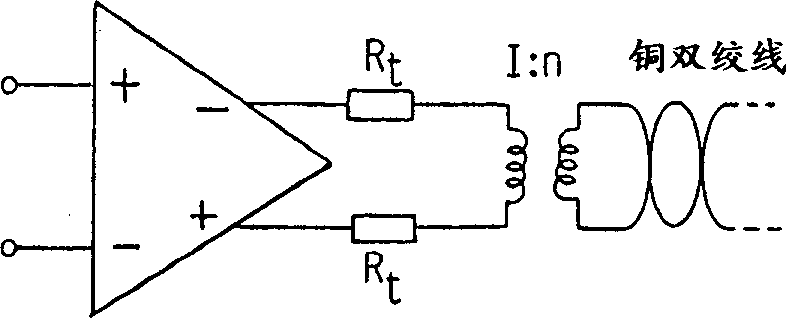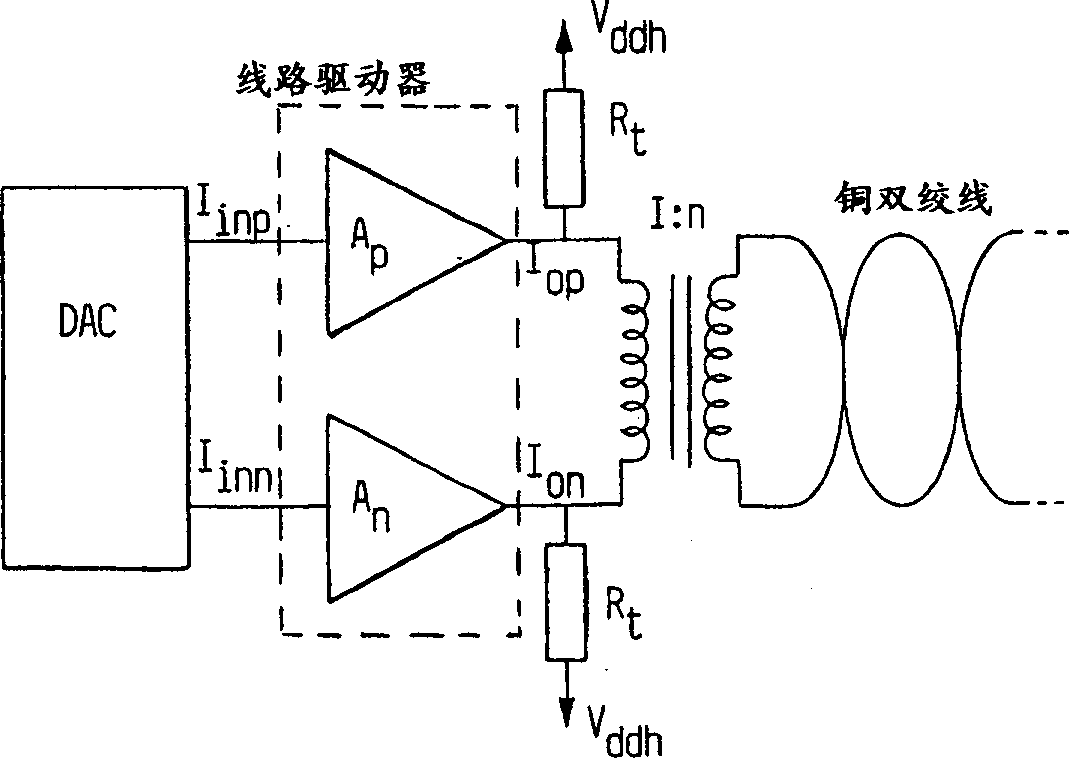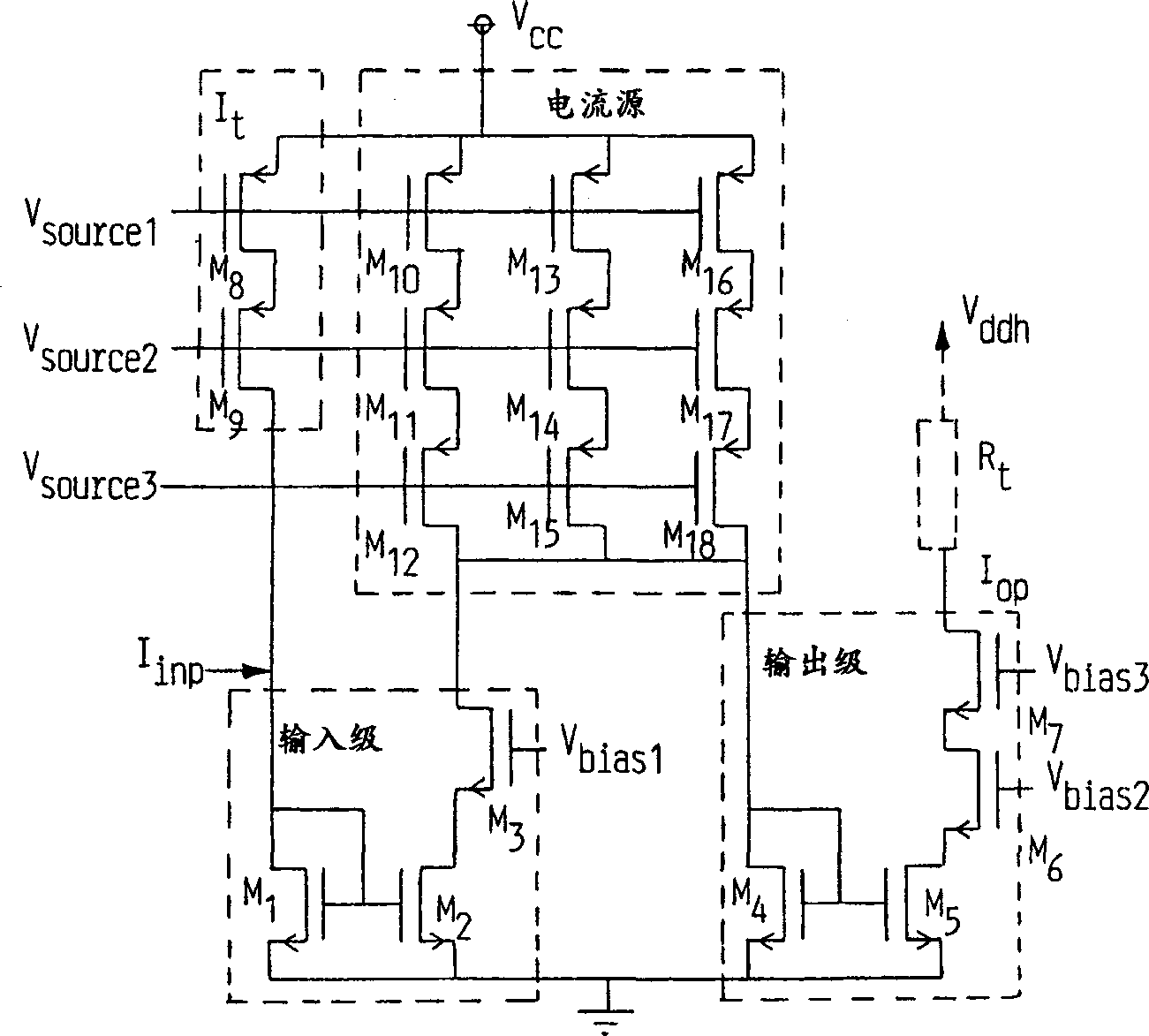Differential line driver
A line driver and driver technology, applied in the direction of differential amplifiers, line transmission components, circuits, etc., can solve problems such as instability and low signal bandwidth
- Summary
- Abstract
- Description
- Claims
- Application Information
AI Technical Summary
Problems solved by technology
Method used
Image
Examples
Embodiment Construction
[0017] The general concept of the invention can be explained by figure 2 come to understand. A line driver is configured with a pair of current inputs I inp and I inn . The line driver (in the dotted rectangle) has a pair of current outputs configured with a ddh and connected to the terminal resistor R of the transformer coil t , while the other coil is connected to the copper twisted pair. Obviously, there is also a set of two current amplifiers A in the dotted rectangle p and A n .
[0018] The line driver itself will have a very low input impedance in order to interface easily with a driving DAC. Different from the conventional scheme shown in Fig. 1, the line driver proposed by the present invention has a very high output impedance. With a low input impedance and a high output impedance, the line driver is a current-mode line driver. Port resistors at the output of the line driver will give a high common-mode rejection and impedance matching.
[0019] The effect...
PUM
 Login to View More
Login to View More Abstract
Description
Claims
Application Information
 Login to View More
Login to View More - R&D
- Intellectual Property
- Life Sciences
- Materials
- Tech Scout
- Unparalleled Data Quality
- Higher Quality Content
- 60% Fewer Hallucinations
Browse by: Latest US Patents, China's latest patents, Technical Efficacy Thesaurus, Application Domain, Technology Topic, Popular Technical Reports.
© 2025 PatSnap. All rights reserved.Legal|Privacy policy|Modern Slavery Act Transparency Statement|Sitemap|About US| Contact US: help@patsnap.com



